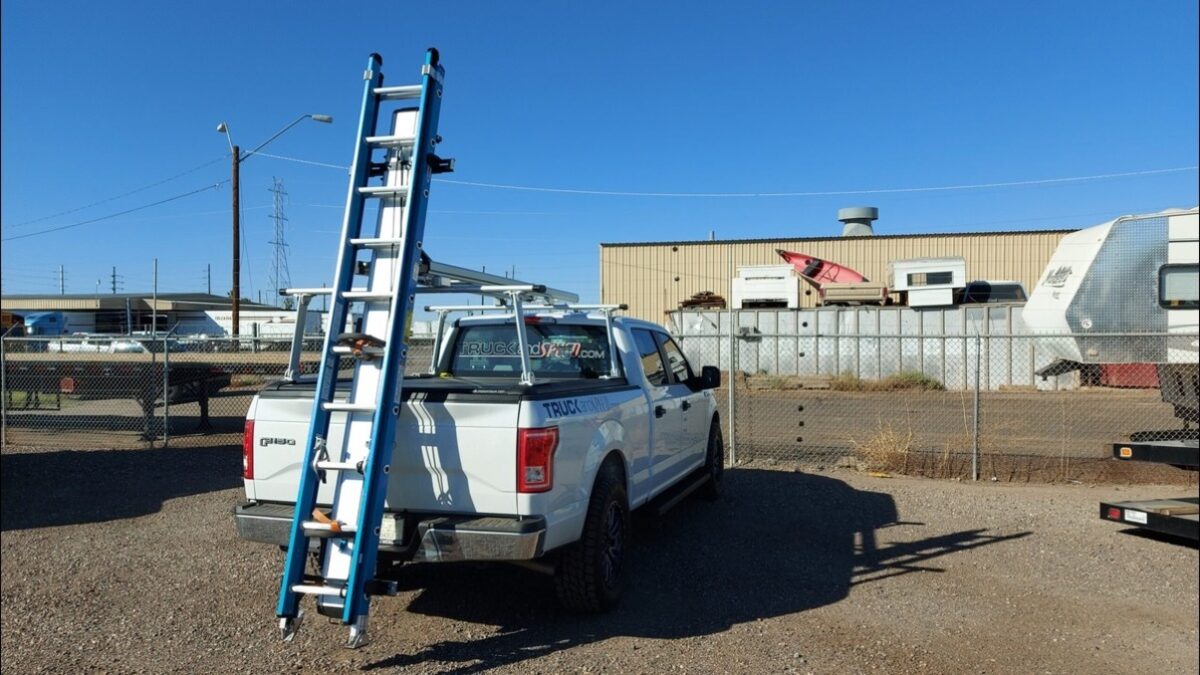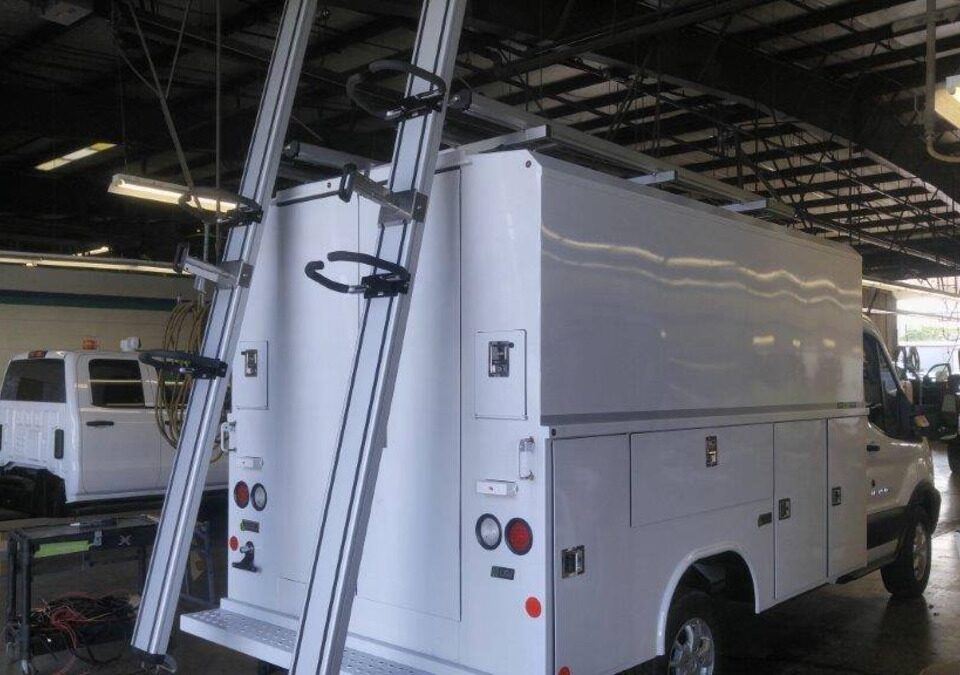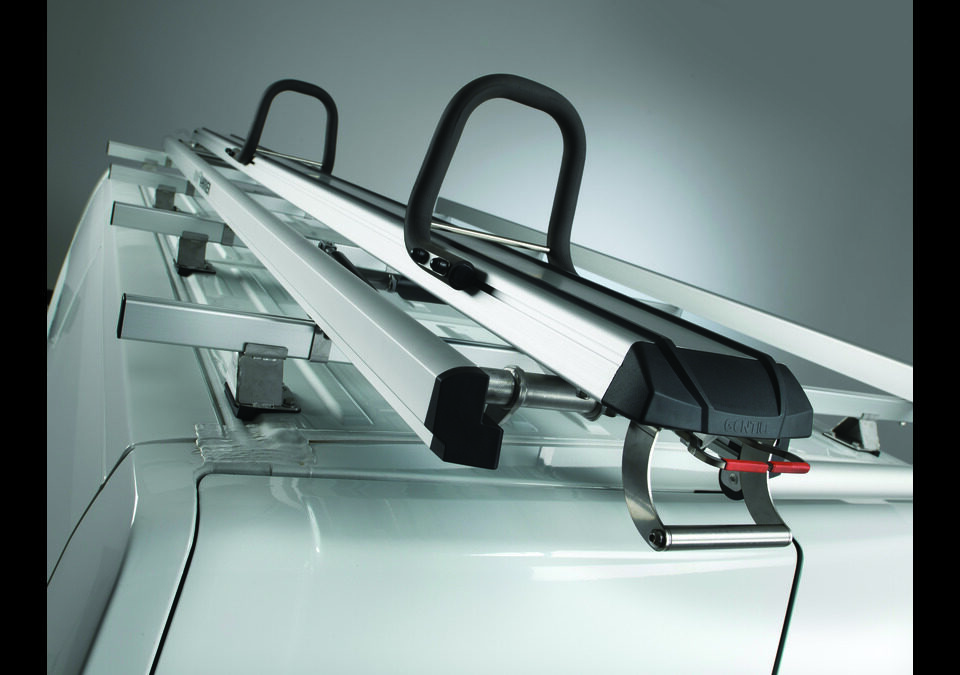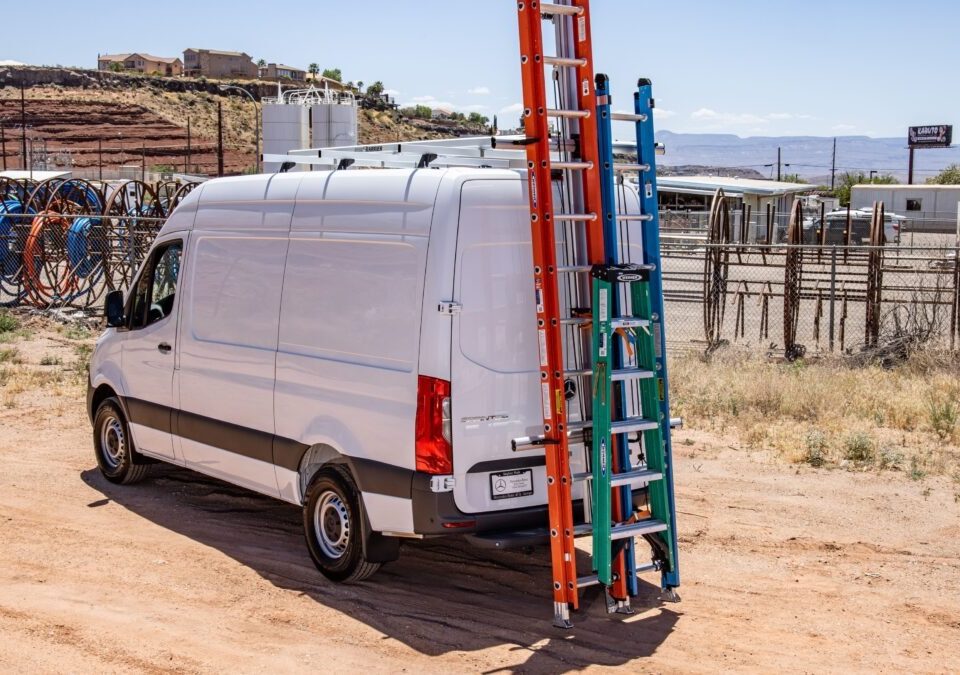
The Need for Hydraulic Ladder Rack for Van: Efficiency Meets Safety
18 June 2025
Universal Ladder Racks fitting any vehicle
9 October 2025Commercial Vehicle Ergonomic Ladder Racks: Ground Level Is the First Step Towards Safety
In commercial fleets, which include utility bodies, KUVs, trailers, vans, and pickup trucks, maintaining roof-mounted ladders is a daily operational duty. Without the right tools, loading and unloading these ladders—which are frequently long, heavy, and composed of fiberglass—can be challenging. Without ergonomic solutions, employees are compelled to lift objects in uncomfortable and dangerous ways, which increases the risk of shoulder and back injuries, which are a serious concern according to ANSI and OSHA safety regulations.
The Problem: Tall Vehicles and Heavy Ladders
It is more difficult to manoeuvre a ladder that is longer and heavier, particularly if it is made of fibreglass, which is used in the electrical industry because of its non-conductive qualities. The ergonomic risk rises dramatically when vehicle roof heights reach 110 to 130 inches, as is the case with KUVs, utility bodies, or high-roof vans. These ladders frequently weigh 50 to 70 pounds or more.
Operators must elevate the ladder from ground level to above shoulder height without a lifting device, frequently by twisting or reaching, which is in direct opposition to ANSI/ASSE Z244.1 recommendations for safe manual handling and OSHA 29 CFR 1910.176 (handling of materials). Additionally, according to OSHA’s Safety and Health Information Bulletins (SHIBs), these behaviours are high-risk factors for Work-Related Musculoskeletal Disorders (WMSDs), which account for a significant portion of missed workdays.
The Solution: Hydraulic-assisted ladder racks that operate from the ground are the answer.
Hydraulic-assisted ladder racks, which use mechanical dampers or gas springs to help in loading and unloading, are the ideal approach to minimise lifting strain and adhere to OSHA’s ergonomic best practices.
These systems make it possible for:
- Loading and unloading at ground level, doing away with the need to raise ladders above the waist.
- Neutral posture handling reduces the strain associated with manual lifting and is in conformity with ANSI A10.40-2007 requirements.
- Controlled action because of gas-assisted pistons, which lessen the chance of harm by absorbing the ladder’s weight while it moves and avoiding abrupt drops or jerks.
- According to OSHA’s general duty clause (Section 5(a)(1)), these methods allow a single person to safely operate even 32–40 foot fibreglass ladders from the ground without the need for overhead lifting. This is a crucial ergonomic principle.
The Reasons Conventional Side Racks Are Insufficient
Particularly on taller trucks, standard side-mounted ladder racks, particularly those with sliding or swing-down features, do not provide complete ergonomic support. Even while operating trucks and vans with low roofs, the operator must:
- Position ladders on the rack, raise them from the bottom to a height of 50 to 70 inches;
- Manage the weight in a crooked, high, or twisted manner;
- The danger of shoulder discomfort is greatly increased while working over shoulder height, particularly when doing so repeatedly.
One of the main causes of musculoskeletal diseases at work is repetitive lifting over shoulder height, which can be lessened using engineering solutions such hydraulic-assisted systems, according to OSHA Technical Manual Section VII (Chapter 1: Ergonomics).
Compliance and Ergonomics: Integrated into the Design
- Assist businesses in fulfilling OSHA’s requirements for injury prevention and safe material handling;
- Adhere to ANSI’s best practices for ergonomic design in building and maintenance;
- Minimise liability exposure, workers’ compensation claims, and lost time injuries.
Selecting hydraulic-assisted ladder racks is a proactive move for fleet managers, safety officers, and operations directors to guarantee both field safety excellence and regulatory compliance.
The way ladders are loaded and stored is important for businesses in industries like electrical, telecommunications, construction, and facility maintenance where ladders are utilised on a daily basis. Tall trucks with heavy fibreglass ladders present significant ergonomic problems that conventional methods cannot resolve.
The most ergonomic, worker-friendly, and compliant option on the market is a hydraulic-assisted ladder rack, which allows field workers to load and unload objects:
From ground level;
Without lifting anything overhead;
Completely compliant with ANSI and OSHA regulations.
They aren’t just safer — they’re smarter.
And that’s what distinguishes the greatest operations in the performance-driven, safety-conscious world of today.






